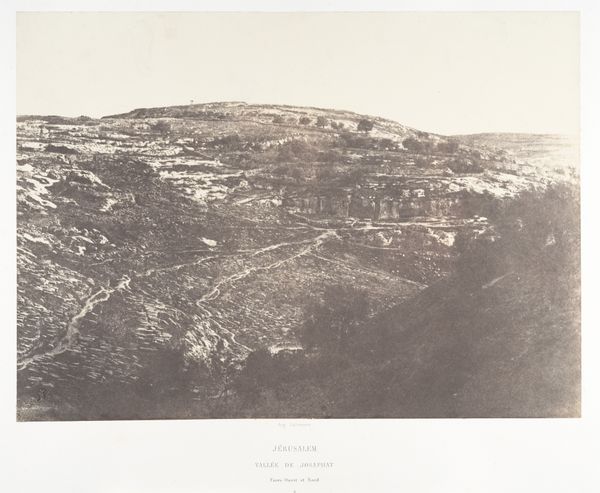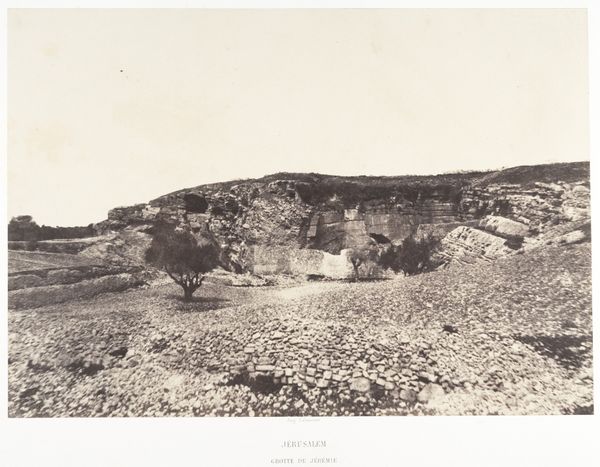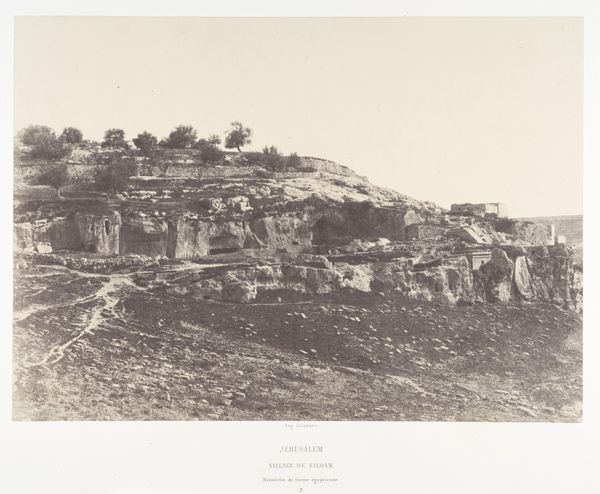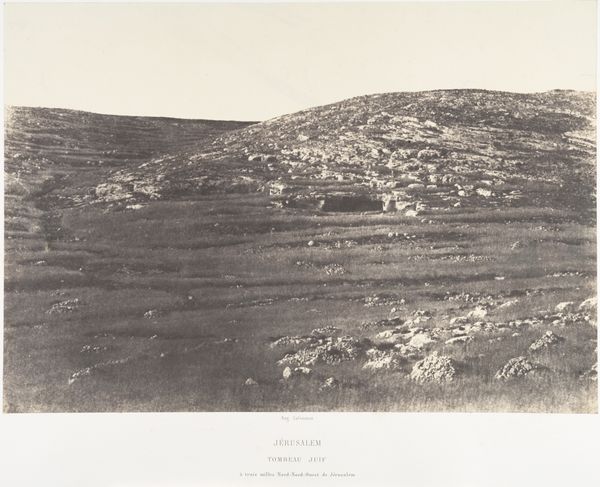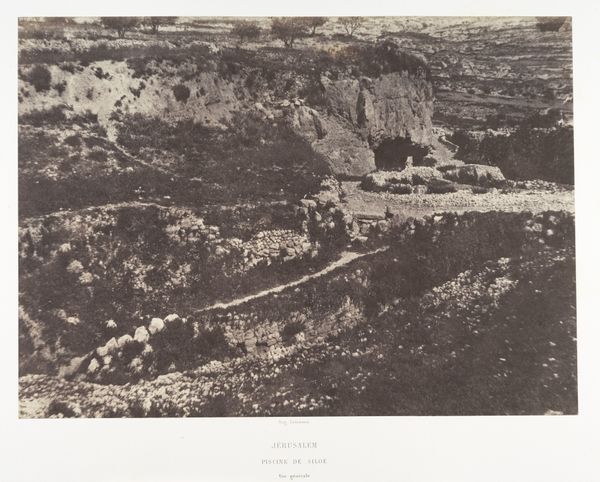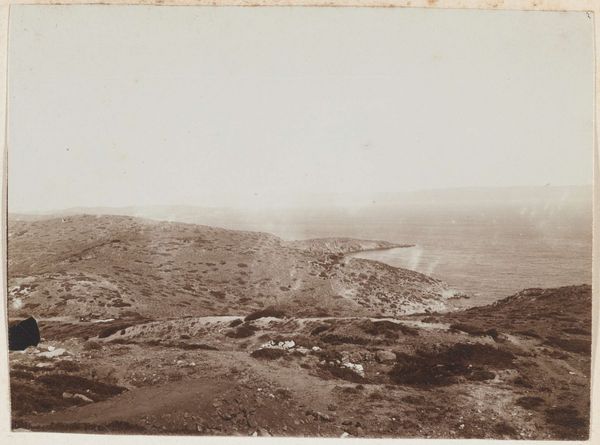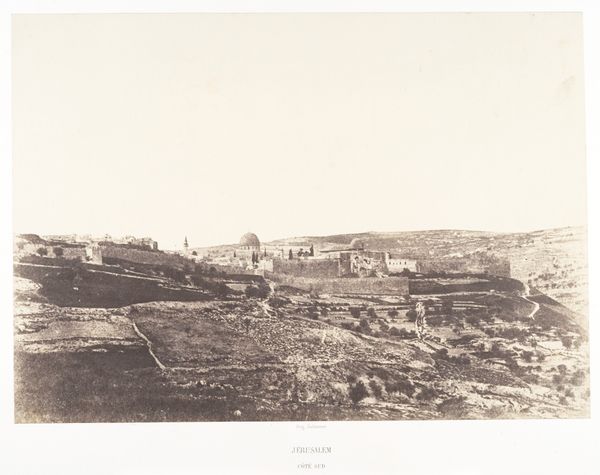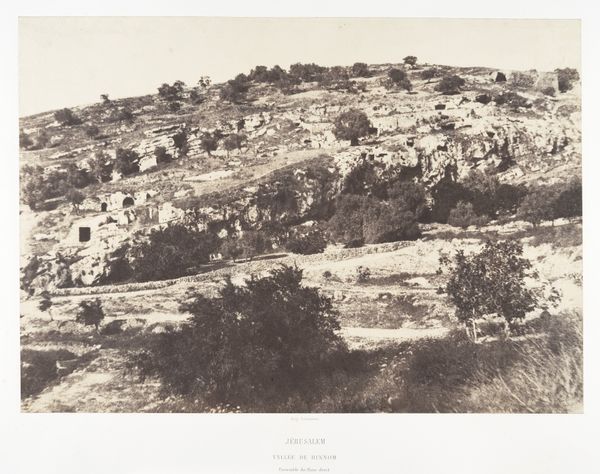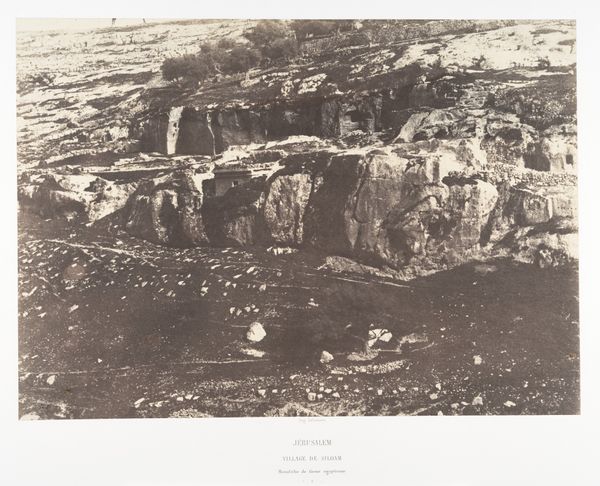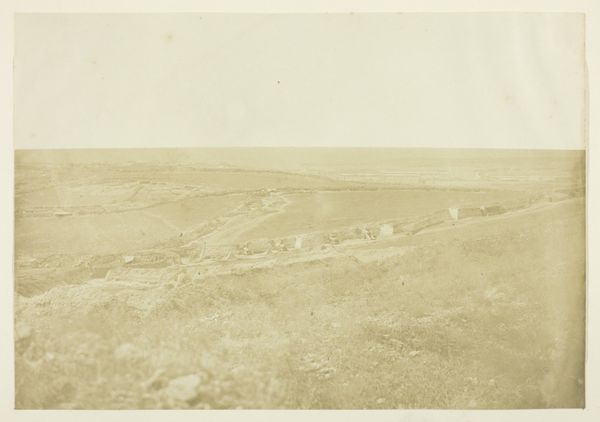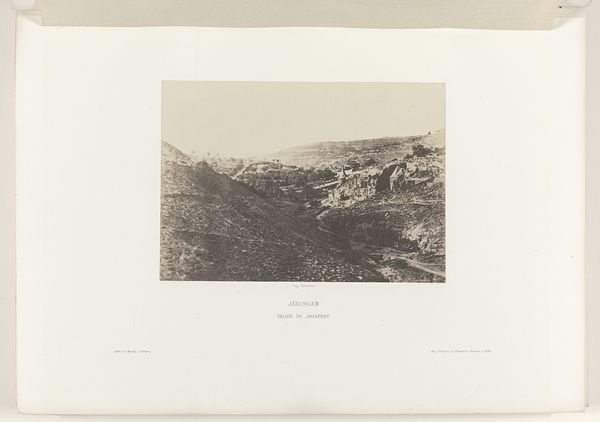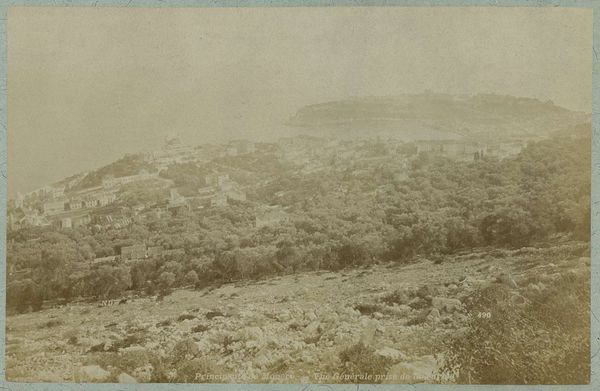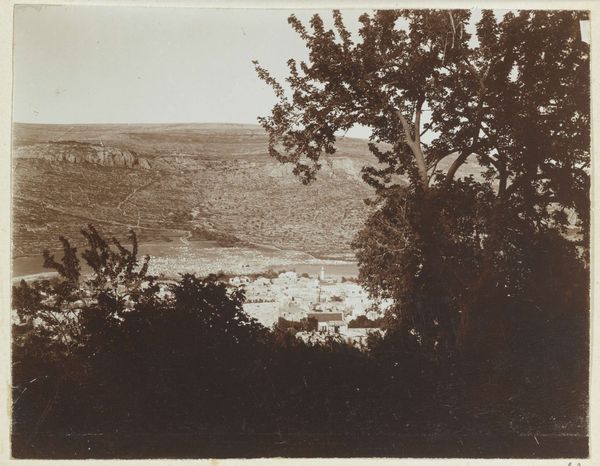
Jérusalem, Vallée de Josaphat, Vue générale 1854 - 1859
0:00
0:00
daguerreotype, photography, architecture
#
landscape
#
daguerreotype
#
photography
#
ancient-mediterranean
#
architecture
Dimensions: Image: 22.3 x 32.2 cm (8 3/4 x 12 11/16 in.) Mount: 44.4 x 59.6 cm (17 1/2 x 23 7/16 in.)
Copyright: Public Domain
Auguste Salzmann made this photograph of Jerusalem’s Valley of Josaphat using a paper negative, a process that allowed for multiple prints to be made. This was a time when photography was still relatively new, and its role was being defined. Salzmann's work falls into the 19th-century fascination with the Middle East, often linked to colonial ambitions. France, where Salzmann was from, was expanding its influence in the region. The image presents a view of Jerusalem that emphasizes its historical and religious significance. The Valley of Josaphat is important in Christian, Jewish, and Muslim traditions, believed to be the site of the Last Judgment. Photographs like this served as a kind of visual record, but also shaped European perceptions of the region. They could be used to reinforce religious or political narratives. To understand Salzmann's work fully, we might look at how these images were used and circulated in Europe, what kind of audience they were made for, and how they fit into the broader context of European involvement in the Middle East. This photograph then is a product of its time, reflecting the complex interaction of art, politics, and cultural exchange.
Comments
No comments
Be the first to comment and join the conversation on the ultimate creative platform.
